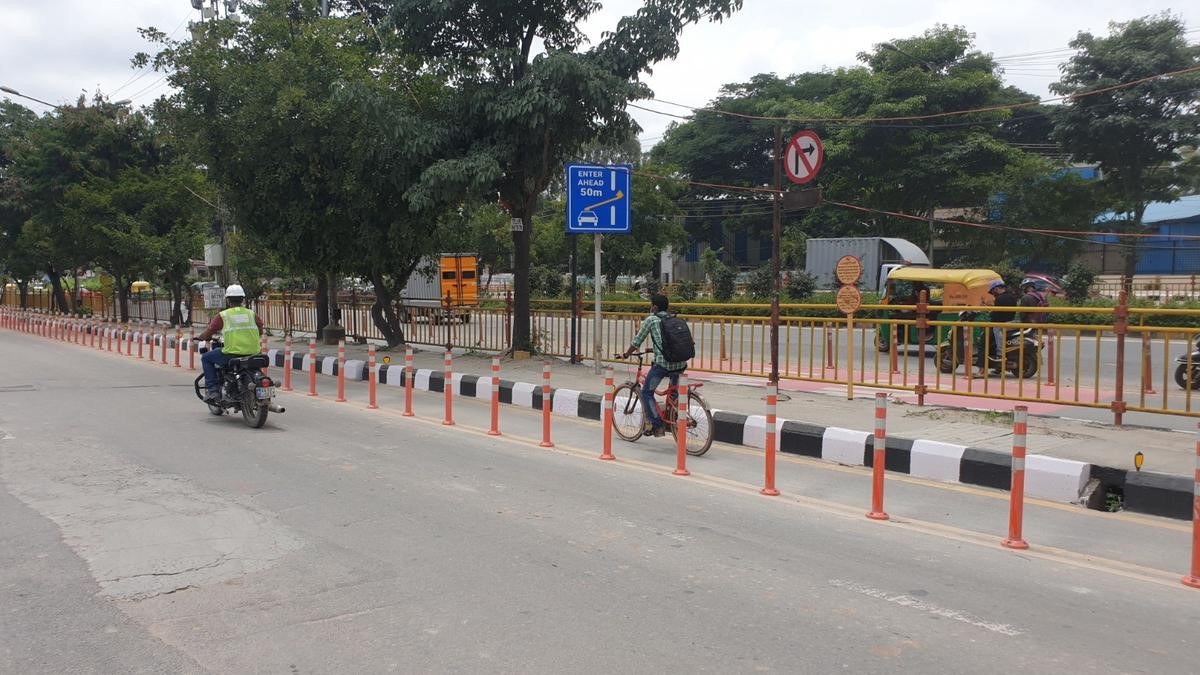Towards a Pedestrian-First India: Active Mobility as the Foundation of Sustainable Urban Transport
Syllabus:
GS – 3- Sustainable transportation in India, Quality of Life , Human Development Index
Focus :
The article highlights the significance of active mobility—non-motorised human-powered transportation such as walking and cycling—in building sustainable, inclusive, and healthy urban spaces. It explores India’s infrastructural and societal barriers, ongoing initiatives like Karnataka’s Active Mobility Bill, and successful global models that could inspire Indian urban planning towards safer, greener, and pedestrian-friendly environments.
Introduction: The Urban Mobility Crisis in India
- India’s cities are witnessing a surge in road accidents, especially involving pedestrians, cyclists, and street vendors.
- Urban planning traditionally prioritised motorised transport, leaving non-motorised users vulnerable.
- Even in cities with dedicated pedestrian or cycle lanes, encroachment by motor vehicles nullifies the safety and effectiveness of these spaces.
- Active mobility offers a sustainable and inclusive solution amidst growing urban congestion and environmental concerns.
What is Active Mobility?
- Definition: Active mobility refers to modes of transport powered by human energy.
- Common Forms:
- Walking
- Cycling
- Skateboarding
- Rollerblading
- Wheelchair use (non-motorised)
Importance of Active Mobility in the Indian Context
Rising Pedestrian Fatalities
- Karnataka reported the highest number of pedestrian deaths (13% of total fatalities in 2020).
- Poor infrastructure and encroachment increase the risk for non-motorised road users.
Environmental Sustainability
- Road transport accounts for nearly 12% of India’s carbon emissions.
- Non-motorised transport helps reduce carbon footprints significantly.
- Aligned with India’s international commitments like the Paris Agreement and national policies like the Smart Cities Mission and National Transit Oriented Development (NTOD) Policy.
Economic and Social Benefits
- Reduces household spending on fuel and vehicle maintenance.
- Improves local economies by boosting footfall in market areas.
- Lowers healthcare costs by enhancing public health outcomes.
Public Health and Well-being
- Prevents lifestyle diseases such as obesity, diabetes, and heart ailments.
- Enhances cardiovascular health, mental wellness, and physical fitness.
- Encourages social interaction and community participation in public spaces.
Karnataka Active Mobility Bill, 2022
Background
- Spearheaded by Sathya Sankaran, Bengaluru’s first Bicycle Mayor.
- Drafted in response to high pedestrian death rates and lack of cyclist infrastructure.
Objectives of the Bill
- Provide legal protection for pedestrians and cyclists.
- Promote non-motorised transport as a legitimate urban mobility mode.
- Ensure equal access to public spaces.
- Encourage infrastructure development that prioritises active modes of transport.
- Broader Significance-A model for other states to emulate. It addresses crucial gap in urban mobility legislation.
Initiatives by Other Indian Cities
Delhi
- Cycling and pedestrian-friendly initiatives under the Delhi EV Policy.
- Emphasis on non-motorised last-mile connectivity.
Pune
- Comprehensive Bicycle Plan with over 300 km of cycling lanes.
- Integration of active transport in city planning.
Chennai
- Redesigning roads under Smart Cities Mission.
- Wider footpaths, safer crossings, and traffic-calmed streets.
Kochi
- Implemented Public Bicycle Sharing (PBS) systems.
- Promotes last-mile connectivity and eco-friendly transit options.
Barriers to Active Mobility in India
Inadequate Infrastructure
- As of 2021, 85% of roads do not meet basic safety standards for pedestrians and cyclists.
- Lack of continuous, well-lit, and obstruction-free footpaths and cycle tracks.
- Absence of pedestrian bridges, zebra crossings, and bike racks.
Urban Planning Bias
- City designs have long prioritised motorised transport.
- Limited integration of pedestrian needs in town planning and traffic regulation.
Weather and Distance Constraints
- Hot and humid weather, particularly in tropical regions, discourages walking/cycling.
- Long commuting distances in metropolitan areas make active transport impractical without supporting infrastructure (e.g., cycle-rent stations, rest stops).
Social and Cultural Factors
- Use of private vehicles is associated with higher social prestige.
- Walking and cycling often seen as modes for the poor or lower-middle class.
Traffic and Safety
- Inadequate enforcement of traffic laws.
- Encroachments on footpaths and cycle tracks.
- High volume of vehicular traffic deters safe usage of non-motorised modes.
The Global Scenario: Lessons from the World
The Netherlands
- Over 35,000 km of dedicated cycling lanes.
- Cycling is the primary mode of transport in cities like Amsterdam and Utrecht.
- Extensive investment in parking stations, traffic calming zones, and education on cycling safety.
Germany
- Berlin Mobility Act mandates:
- Wider sidewalks.
- Dedicated bike lanes.
- Reduced vehicle speed limits.
- Prioritisation of pedestrian and cyclist movement in urban planning.
European Union Policies
- The EU Mobility and Transport Department promotes cycling and walking as key to sustainable mobility.
- Supports member nations in implementing safe infrastructure, awareness campaigns, and research into mobility patterns.
Vision Zero
- Adopted by several European countries including Sweden and Germany.
- Aims for zero fatalities or serious injuries on roads.
- Focuses on safe infrastructure, awareness, and urban design for human error.
Making Active Mobility a Reality in India
Policy and Governance Recommendations
- Enact central legislation mandating minimum standards for pedestrian and cycling infrastructure.
- Allocate dedicated budgets for non-motorised transport under urban development schemes.
- Incentivise state governments to adopt and adapt active mobility policies.
Urban Design Reforms
- Design complete streets that are inclusive of pedestrians, cyclists, and public transport.
- Develop mixed land-use areas to reduce commuting distances.
- Build shaded footpaths, rain shelters, and rest stops to improve comfort.
Behavioural Change Campaigns
- Mass awareness campaigns to change perceptions of walking and cycling.
- Involve celebrities, influencers, and civil society in promoting active mobility.
- Conduct community engagement programs to co-design streets with local users.
Integration with Public Transport
- Enable seamless integration between walking, cycling, and public transport.
- Establish last-mile connectivity options like PBS systems.
- Provide safe cycle parking near metro stations, bus terminals, and schools.
The Way Forward
- The transition to sustainable urban mobility in India cannot be driven by infrastructure alone; it requires a shift in mindset.
- Pedestrian-first planning can democratise public spaces, reduce socio-economic disparities, and create cities that are not only efficient but also equitable and humane.
- Active mobility, when positioned as a core pillar of transport and health policy, can transform the urban experience for millions.
Associated Article
https://universalinstitutions.com/how-is-india-planning-to-boost-ev-production/
Mains UPSC Question GS 3
Active mobility is a cornerstone of sustainable urban transport planning in modern cities.” Examine the relevance of promoting active mobility in India. Discuss the challenges in implementation and suggest policy measures, with reference to global best practices. (250 words)




